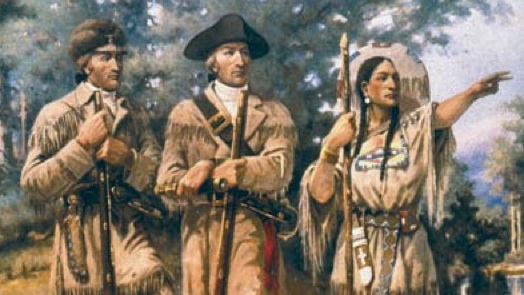#TBT: The Lewis and Clark Expedition
 St. Louis is considered the Gateway to the West, and there’s a reason for that. On May 14, 1804, William Clark and his Corps of Discovery departed from a fort near St. Louis at the Mississippi River to begin a two-year exploration of the land acquired in the Louisiana Purchase. On this day (May 21) in 1804, Meriwether Lewis joined Clark in the then-settlement of St. Charles, Mo., and together they led the Corps on the first American expedition west of the Mississippi. As we all know, it reached the Pacific Ocean; it also paved the way for Americans to live and thrive in the newly acquired western territory.
St. Louis is considered the Gateway to the West, and there’s a reason for that. On May 14, 1804, William Clark and his Corps of Discovery departed from a fort near St. Louis at the Mississippi River to begin a two-year exploration of the land acquired in the Louisiana Purchase. On this day (May 21) in 1804, Meriwether Lewis joined Clark in the then-settlement of St. Charles, Mo., and together they led the Corps on the first American expedition west of the Mississippi. As we all know, it reached the Pacific Ocean; it also paved the way for Americans to live and thrive in the newly acquired western territory.
Here are 14 things you should know about the trip:
- The expedition was ordered in by President Thomas Jefferson, who guided the Louisiana Purchase the year before.
- Meriwether Lewis was Jefferson’s personal secretary.
- William Clark, recruited by Lewis, was never officially recognized by the government as a co-captain of the expedition.
- Jefferson’s goal was for Lewis and Clark to find a water route linking the Columbia and Missouri rivers to increase western access to port markets and eastern cities.
- Items the duo packed included 45 flannel shirts, 106 liters of salt, vermilion face paint (as a present for Indian tribes), and 176 pounds of gunpowder
- and their black Newfoundland dog named Seaman. He became the only animal to complete the journey west to the Pacific!
- Lewis and Clark established diplomatic relationships with several Native American tribes along the way – some of whom were a great help to the expedition. (The Shoshone Indians actually helped them cross the Bitterroot Mountains on horseback.)
- Sacagawea, a Shoshone, served as an interpreter between Lewis and Clark and her tribe.
- The Coyote, the Grizzly Bear and the Prickly-Pear Cactus were among the 300 plant/animal species Lewis and Clark discovered.
- Oh yeah, and the duo also discovered the Rocky Mountains.
- The duo produced detailed maps of the land and water they encountered on their journey – including creeks and spots where they camped – paving the way for future explorers.
- Their expedition sparked a flow of immigration to and development of the western U.S. territory.
- The increase in western development displaced many of the Indians who originally had good relationships with Americans due to Lewis and Clark. The flood of immigration forced them onto reservations.
- Thomas Jefferson had originally expected Lewis and Clark to find woolly mammoths, erupting volcanoes and a mountain of pure salt on their journey.
Thanks, Lewis and Clark, for all your discoveries and for helping to make St. Louis the true Gateway to the West!
Sources: Archives.gov, NationalGeographic.com

